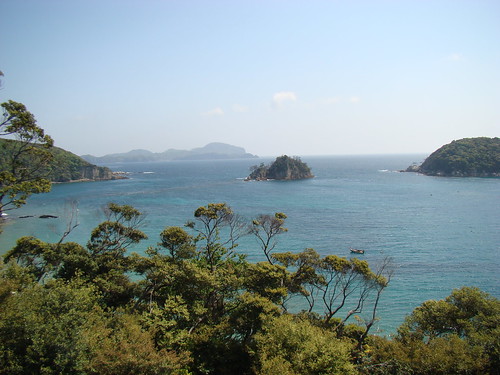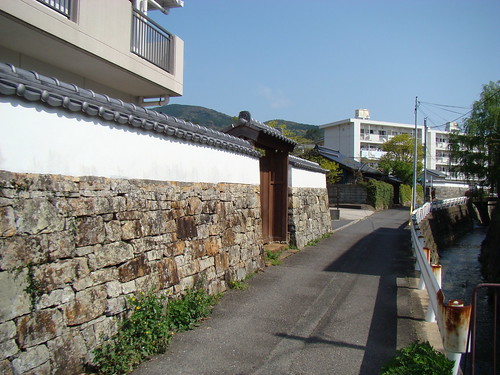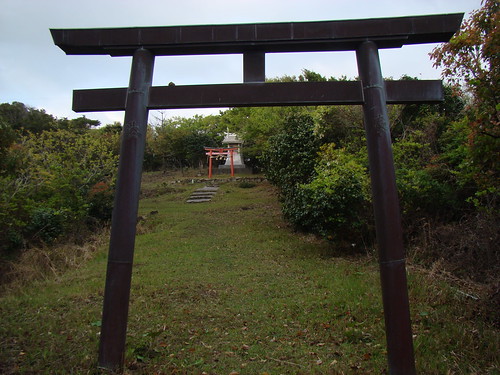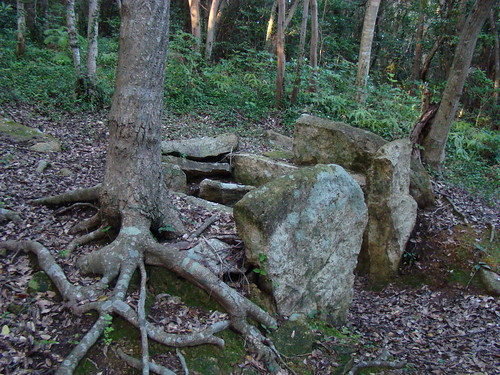In April of 2008, I took a trip to Tsushima island for several days with a close friend, and we spent a long weekend traveling around the island by bicycle. By popular request, here is a brief travelogue of my trip, split into three parts.
What is Tsushima?
Tsushima is an island situated almost perfectly between the Korean Peninsula and the island of Kyushu, but which has been in the Japanese cultural sphere for all of recorded history (since at least the Kofun period). The Mongols invaded the island twice on their way to Japan, slaughtering many of the inhabitants. After their departure, it once again became an independent Japanese province under the control of the So Clan, who ruled the island for seven centuries. The So Clan maintained relatively friendly relations with Korea, and often acted as an ipso facto advocate for Korea domestically in Japan. Today, it is part of Nagasaki prefecture, despite its geographic proximity to Fukuoka.
It has a very small population — despite being Japan’s sixth largest island, it is home to only 34,000 people. (By comparison, the smaller Sado Island off the coast of Niigata has a population of 63,000.)
How do you get there?
I flew from Tokyo into Fukuoka and took a night ferry from Fukuoka to Tsushima. The other way to travel there from Japan is to take a flight from Nagasaki. There are also flights and ferries from Korea.
How do you get around?
You must take a car, motorcycle, or bicycle. There is basically no public transportation and only a few sights are in the city limits. Tsushima is, like much of Kyushu, very hilly and not the greatest cycling terrain, unless you’re crazy enough to enjoy stuff like that (like me). A ferry bus tours around the beautiful bay in the middle of the island about twice a day.
I hear there are problems with Tsushima and Korean tourists/capital investment/territorial claims.
Yes, there are a myriad of issues, from Korean acquisition of (very cheap) land, Korean tourists with awful manners and drunken behavior, and occasional claims by Korean public figures that Tsushima is/should be/in fact actually is/etc. Korean territory. The details are far too tedious to discuss in detail, but if you want more info you can read a summary in Japanese here. I saw lots of Koreans on guided tours, and they were very rowdy and drunk at my hotel — but they must outnumber Japanese tourists 5 to 1, so the money from foreign touristm must be welcome to this relatively poor and isolated corner of Japan.
Where can I get more information?
Japanese travel guides are notoriously lame, with information only on onsens and hotel meals. You can get all the information you need online if you can read Japanese. A good site is here, a tourism pamphlet is here, and a Google Maps collection of sites to see is here.
Is it worth visiting?
Absolutely. There are some wonderful historical sights, natural treasures, beautiful views, and the sights are often empty and allow the tourist to enjoy solidarity. I’ll explain some of the fun sights to see in my next two posts. But in the meantime, here are a few pictures with some comments.

A view of the eastern shore of the southern half of the island.

Tsushima has lots of shale, which is used in building ishigaki stone walls, foundations of buildings, and old castles now in ruins. The stone walls in particular are beautiful, as the shale is inconsistent in shape but with very clean angles, making for elegant construction. These walls really are everywhere, such as here where it remains in front of a shoddy apartment building.

An abandoned shrine.

A kofun grave dating from the 2nd-5th century, evidence of Tsushima’s cultural ties to the rest of Japan.

Awesome post. One correction: the flights to Tsushima are from Fukuoka, not Nagasaki. I only know this because it’s a way for airline otaku to rack up ANA miles.
Nice pictures. I look forward to part 2.
“…allow the tourist to enjoy solidarity.”
Do you mean this in some sort of oneness with the environment sense, or do you mean solitude?
Jade OC: Well, both… but my meaning was solitude.
Tsushima reminds me a little of Penang, but just a little.
It would be great if someone on the island came up with some cool Korean-Japanese fusion food items. But maybe that’s coming in a later post.
“some cool Korean-Japanese fusion food items”
The Korean tourists, it is said, bring kimchee and make their own.
Adamu, you realize that spicy mentaiko is influenced by Korean kimchi cuisine, right?
Isn’t kimchi itself fusion cuisine, considering chilli is not native to East Asia?
I just noticed – was the post title a reference to The Hobbit? Did you slay any dragons while you were there?
No. And no.
Hello!
I’ve been living and teaching English in Tsushima since August 2008. I’m glad you made it out here (very few native English speakers do)!
A few corrections/questions:
–Your picture of “an abandoned shrine” isn’t abandoned. You’ll note, I hope, that the grass has been cut. I don’t know of any big shrines (with torii gates) on the island that have been abandoned. The locals usually keep them up pretty well.
–Re: a previous comment, there are flights from BOTH Nagasaki and Fukuoka. Previously, the Nagasaki flights were operated by ORC and the Fukuoka flights by ANA, but in the last year ANA bought ORC, so you should be able to find flights to Tsushima from NAG or FUK from the ANA homepage. The jetfoil’s a heck of a lot cheaper, though, and if reserved at least 3 days in advance there are good deals for roundtrip tickets for up to a week’s stay.
–Where was the kofun in your picture? There are many all over the island, and I don’t think I’ve seen that one yet.